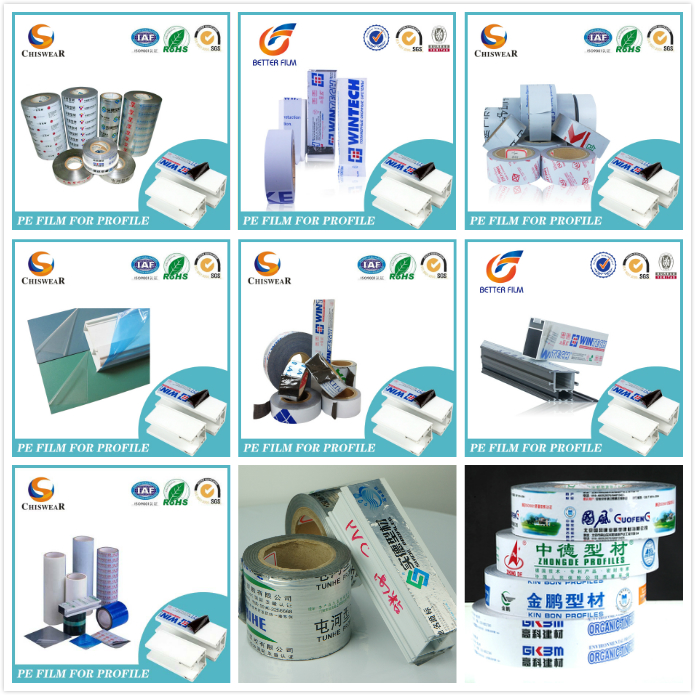Table of Contents
- Choose the appropriate adhesion level:
- Test different adhesion levels
- Avoid environmental impacts:
- Regular monitoring
- Conclusion
- References
Meta Description
Achieve perfect adhesion for protective films by balancing surface type, sensitivity, and duration. Test, monitor, and prepare surfaces to prevent damage or residue.
Body
When confirming the adhesion of surface protection films for profiles or sheet materials, it is important to ensure that they adhere effectively and can be removed without leaving any adhesive residue. Achieving perfect adhesion will ensure utmost protection and clean removal.
If a protection film is too adhesive, it can damage the surface instead of safeguarding it. It leaves residue and that can be difficult to clean. It also affects the appearance of the product. In case of sensitive surfaces and painted ones, it can even peel the top coating.
Whereas, a film that is not appropriately adhesive may experience premature peeling off, exposing the surface underneath to damage. Hence, attaining perfection in the level of adhesion is important not only to ensure the safety of the product but also to maintain its aesthetic appeal.
In this regard, where environmental conditions have a role to play, conducting pilot tests and ensuring continual monitoring can help avoid the problems associated with adhesion. Moreover, taking account of the type and texture of the surface is important while selecting the perfect adhesion for the protective film.
Below are a few tips to avoid issues with adhesion and ensure utmost protection.

Choose the appropriate adhesion level:
Choosing the right adhesive film is all about striking the crucial balance between protection and clean removal. You certainly do not want to damage your delicate surface while removing the film. Similarly, a film that doesn’t stick well is of no use to you as it’s not serving its purpose. Here is how you should weigh your choices depending on the surface texture, its sensitivity level, and the duration of application:
· Surface Texture
For surfaces that are smooth and flat like stainless steel, aluminum, polished metal, tempered glass, and plastic, medium to low adhesion is needed. This helps provide protection and prevent early peeling while ensuring easy removal.
On the other hand, the surfaces that are rough and textured light leather and rough plastic can benefit from comparatively higher adhesion, this helps provide proper adhesion, especially to the areas that are not too flat or even.
· Surface Sensitivity

Other than texture, the sensitivity and strength of the surface also matter. You obviously do not want to peel off the top coating along with the protection film while removing it.
The delicate surfaces like those with paint, lacquer, or sensitive coatings applied on them can get damaged with a film that is too adhesive. Here, the best suited protective film would be the one with low adhesion. It won’t take off the coating and neither would it leave residue.
Whereas for durable surfaces like stone and steel, go for the higher medium to high adhesion.
· Duration of Application
If you are using a protective film temporarily, for example during transport or storage, go for the ones with low adhesion as they will be easy to remove when products reach their final destination.
For protecting against rough day-to-day use or for outdoor protection, medium to high adhesion is needed to avoid impact and damage due to environmental factors like extreme weather, UV exposure, and pollution.
Test different adhesion levels
Pilot testing is always recommended before full-scale application. It helps you reduce the level of risk and avoid damage due to uncertainty. This is especially true when using protective films for different types of surfaces.
Before use, test protection films with different adhesion levels to ensure they do not peel off or stick too tightly during transportation and processing. Generally, the adhesion range is between 30g/25mm and 700g/25mm, and the appropriate level should be selected based on the smoothness of the surface and its delicacy. Moreover, for polished surfaces, the adhesions should be selected carefully after thorough testing.
Temperature and humidity can affect the adhesion of the protection film. Under extreme temperatures (high or low), choose a film that adapts to environmental changes to prevent adhesive degradation that can lead to peeling or residue.
Similarly, during application, make sure the surface is clean. Trapped dust, moisture, or oil can impact proper adhesion and can result in uneven application. This can impact the protective properties in addition to reducing aesthetic appeal of the product.
Applying the films in a controlled environment is always recommended to mitigate the challenges posed by environmental factors. Make sure you don’t apply the films in extreme temperatures and have cleaned the surface thoroughly before application to remove pollutants and moisture.
During production and usage, regularly check the film’s adhesion to prevent changes due to adhesive aging or external factors that could affect its performance. Continuous monitoring will help identify and treat the arising issues in time, thus saving the surface from damage due to peeling off or degradation of the film. Avoiding excessively long periods for any type of adhesive film is recommended and you should consider replacing the film in time to avoid problems.
Conclusion
In summary, achieving the perfect adhesion for protective films requires balancing surface texture, sensitivity, and application duration while accounting for environmental conditions. Pilot testing and continuous monitoring are essential to avoid residue, damage, or premature peeling. By selecting the right adhesive strength and ensuring proper surface preparation, you can effectively safeguard products while maintaining their aesthetic appeal.


